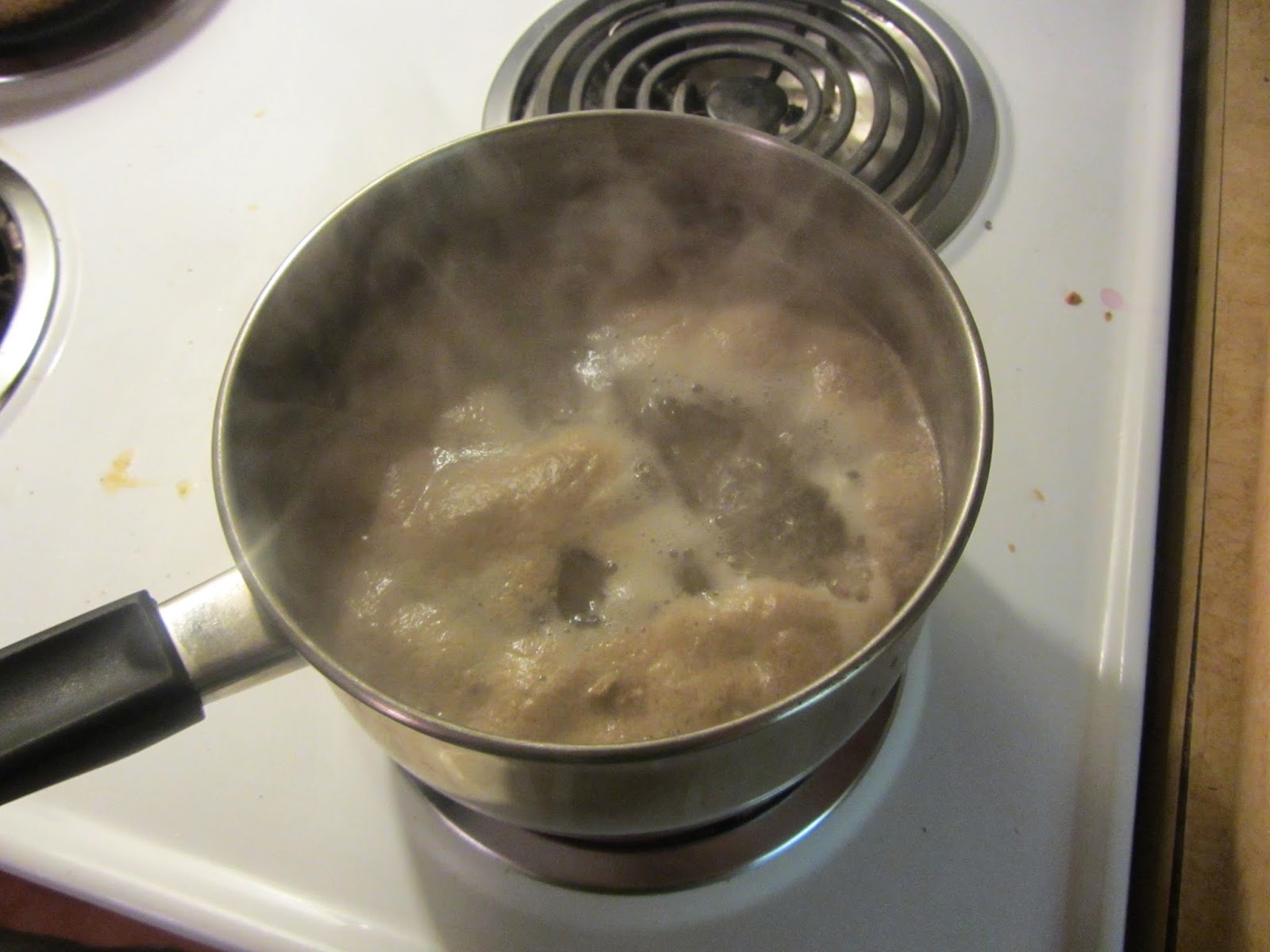polar bear hide hanging in the high school
My friend's husband is an avid hunter and he caught a polar bear recently, about 40 miles east of town. In true Ikaluktutiak spirit, he shared his kill with the entire community.
Hunting polar bear is a very restricted, tightly controlled process in Nunavut. In order to hunt a polar bear, you have to first obtain a tag, which is not an easy process. Only a very limited number of tags are given out per year; if you are the next person on the list to get a tag, you have only a certain number of days to track and catch ONE polar bear. If you don't manage to get one during that time period, too bad. You have to give it back and it goes to the next guy. You need a separate permit to export the hide out of the country.
Everyone in town was happy to get their hands on some tasty healthy country food, so we decided we'd give it a try too. I was curious about whether it would have a strong beary taste to it. We haven't eaten very many carnivores before.
(you can see photos of working the polar bear hide here)
We dropped by the yard where the hunter G was storing the meat. Luckily, all of the outside world is one big freezer here, so he was keeping it wrapped in a tarp on a sled. While we watched, he pulled out a foreleg from under the tarp, set it on the snowy ground, and started hacking pieces off with a little axe, all while the huskies gathered around to watch. That was quite the process. Very different from our usual trip to the butcher's shop, where, you know, you walk up to the counter and say, "I'm feeling like a little lamb shoulder this evening' and the butcher cuts it precisely in a certain way. Getting a precise cut of meat is a bit more difficult to do when, you know, the whole bear has been completely frozen in -50 degree weather ever since it was shot.
But after a bit of sweat and effort, we got our sample of polar bear meat and brought it home in a plastic shopping bag. It had been a five-year-old female, and there were still bits and tufts of white hair embedded in the meat.
Rob got working on it right away. After thawing it out, he rinsed it with water for a long time, to flush out all the blood. He also used a good knife to cut away some of the fat...and you can imagine there was a lot of fat, since the polar bear has to keep warm in Arctic temperatures all the time.
At one point, Rob found a piece of hip bone. I wanted to keep it, like a lucky charm, but Rob wouldn't let me, and he threw it out.
(By the way, there is a whole blog dedicated to dishes that Rob has made.)
Then Rob boiled it for a while, with salt and pepper and a pinch of vinegar. The boiling process let us watch all the impurities rise to the top, all the dirt, hair and fat.
We pondered for a while what kind of dish to make with the polar bear meat. Some of our friends had turned it into a stew, which is always a safe bet because you can cook it for hours. There was a lengthy lengthy discussion about trichinosis. You know, that parasite disease you get from eating certain uncooked wild game, especially bear meat. So that ended my suggestion of serving polar bear sashimi.
Eventually, Rob decided to cook the polar bear kalbi-style. You got that right. The delicious Korean barbecued beef ribs that every single person who has ever tried has immediately loved (*unless they were vegetarian). It's the most popular item at those all-you-can-eat Korean barbecue restaurants. You can't like it. So Rob went for it.
Rob had spent the holidays last year being taught by my grandmother, my mother and my aunt on how to make the perfect kalbi. Every Korean family has their own varied recipe for making kalbi. My grandmother makes amazing kalbi. Unfortunately, my generation of girls in our family doesn't seem to have much of a knack for cooking, so my grandmother has passed on her own personal recipe to Rob. And Rob has been doing some pretty delicious and creative things with it.
Rob made the marinade (which includes pear!) in the blender and then poured it over the boiled polar bear meat. Then he let it sit overnight.
So how did it turn out? To be completely honest, I was expecting it to be an acquired taste; at best, not horrible. My logic was that it's a carnivore, full of tough muscles, so I couldn't see it tasting like veal. Not to mention, it's a polar bear. Weird things have got to taste weird, right?
Wrong. It was AMAZING.
also, look at that flower carrot!
I guess you just have to know what to do with it. And soaking it in delicious kalbi sauce, served with a regular Korean feast, is one way to make it taste amazing. I am not doing one of those fakely enthusiastic "it tasted very...interesting!"
Polar bear kalbi goes very well with seaweed, bean sprouts, bok choy, kimchi, tofu, and zucchini pancakes
Incidentally, there was a little bit of polar bear meat left over, so Rob brought them over to his colleagues. One of his colleagues, who is a woman from the Philippines, was very pensive while tasting it. "It tastes like...like something, I'm trying to remember," she said. Then she swallowed. "Oh, that's right. It tastes like dog! I like it." She smiled.
That was the exact moment that Rob's other colleague, a woman from Newfoundland, had put the meat in her mouth. The look on her face when she heard "dog" was priceless.










